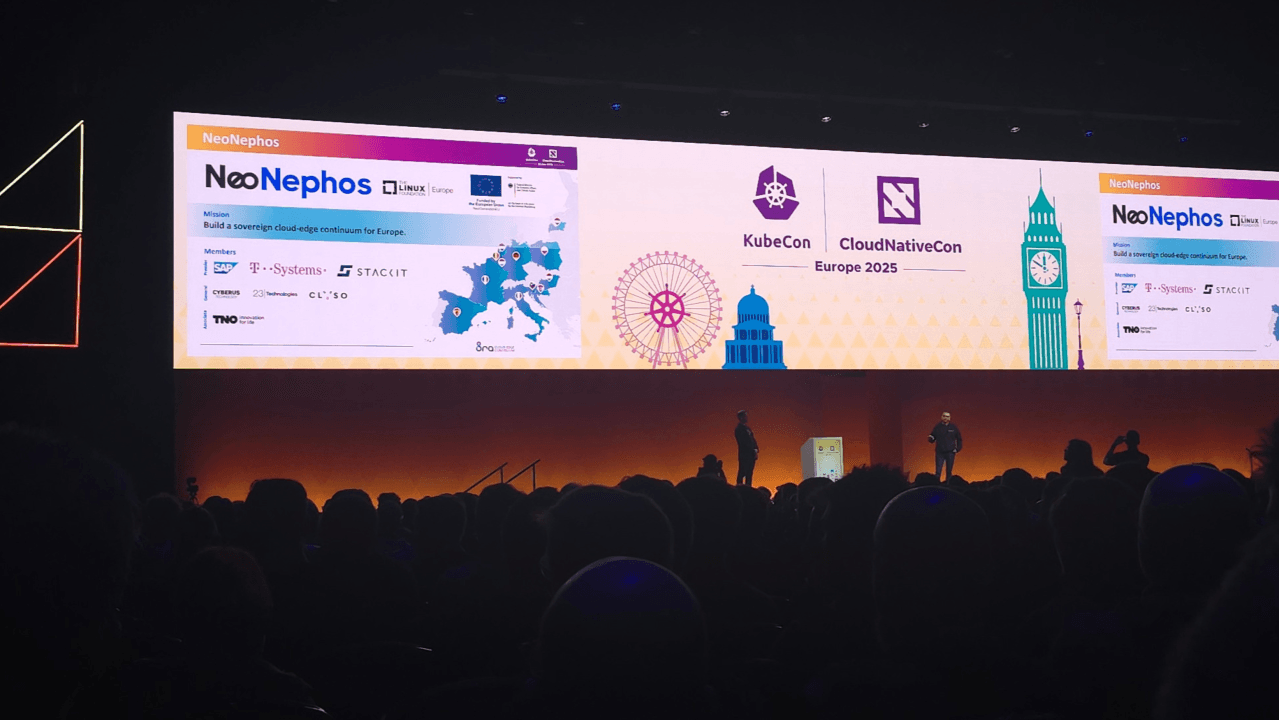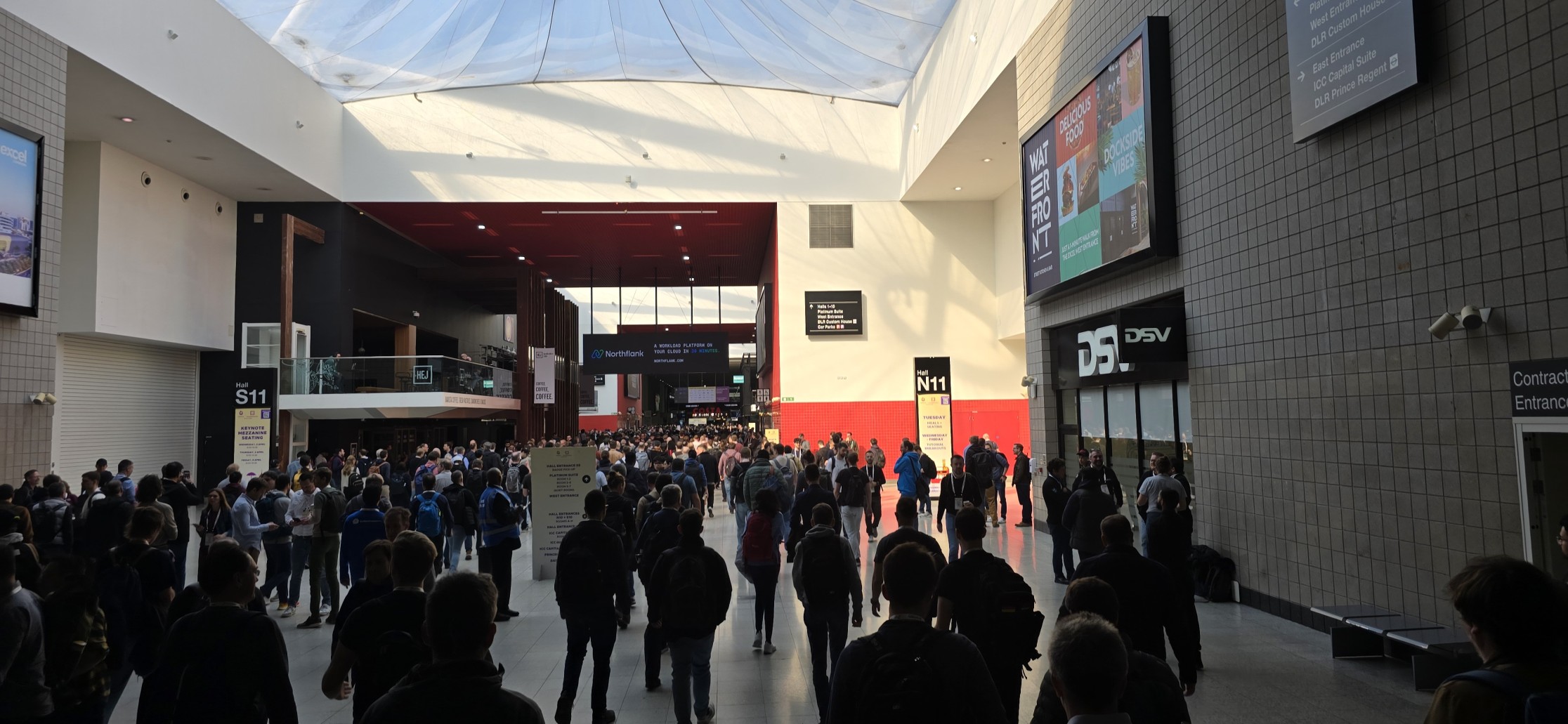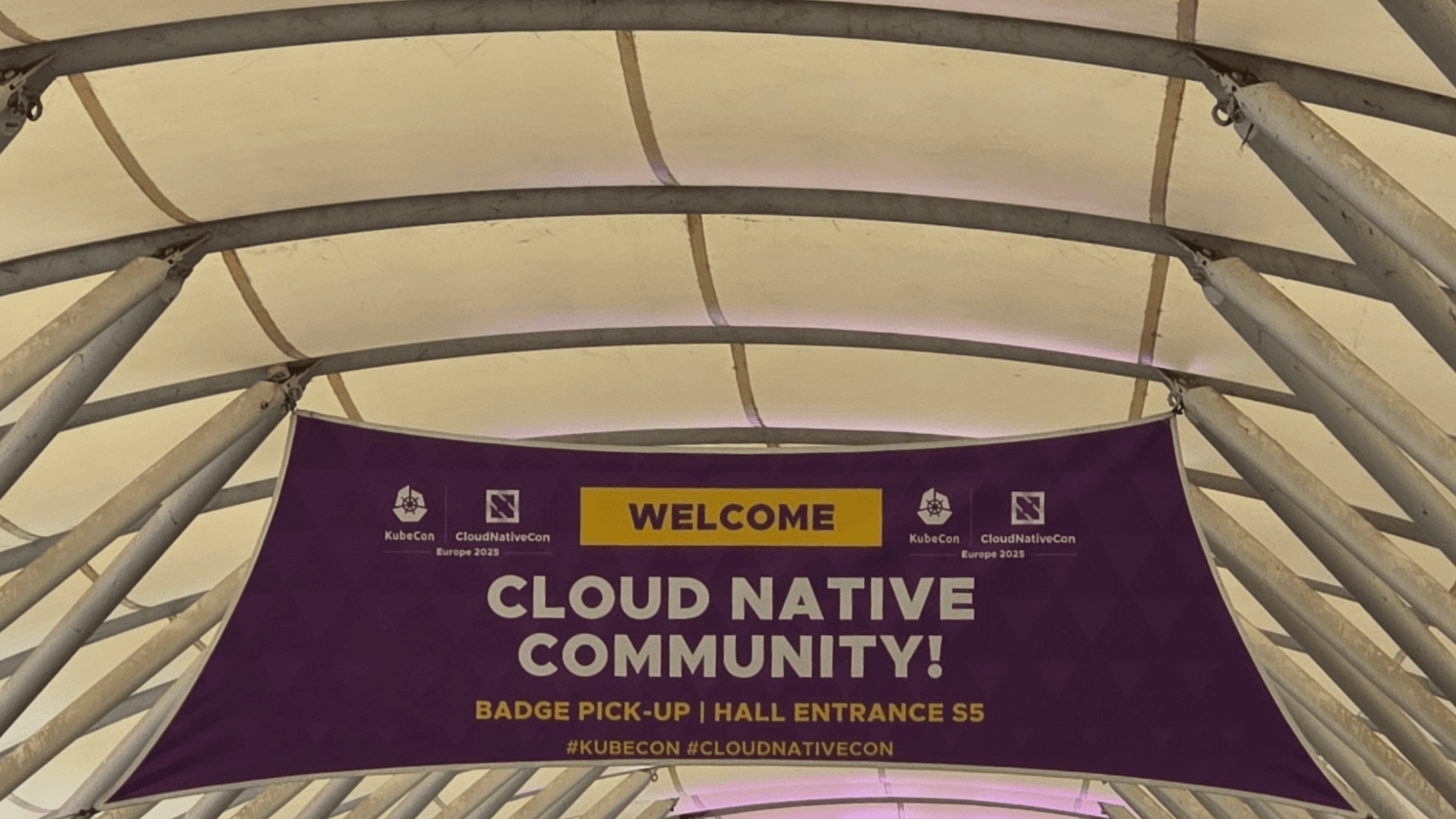KubeCon EU 2025: A Reflection on Progress, Hype, and the Cloud Native Reality

A Week to Reflect
It’s been a week since I returned from KubeCon + CloudNativeCon EU 2025, and I’ve finally taken the time to reflect. I originally wanted to write something earlier, but I found my initial draft leaned too negative — and that wouldn’t have been fair. After a bit of distance and digestion, I think I’ve landed on a more balanced perspective.
A Community Like No Other
The first thing that struck me — and continues to stick with me — is the incredible vibe of the Cloud Native community. The openness, friendliness, and inclusivity on display were inspiring. It’s not unusual to see people from all backgrounds, including trans individuals, being visible and welcomed — and that matters.
That said, I couldn’t shake a sense of dissonance. The event was hosted in a venue owned by the Abu Dhabi National Exhibitions Company — Abu Dhabi being in a country where being transgender can be punished by up to 14 years in prison, and cross-dressing is illegal. If I were a trans attendee, I would’ve felt conflicted — and I imagine others might’ve too. The community is inclusive — but the context
The Conference Experience

The venue itself reminded me of an airport terminal — ultimately cold and impersonal. The air conditioning was either arctic or nonexistent, and several sessions were separated only by curtains, which led to overlapping noise that made it hard to focus. Walking through the expo hall was genuinely fun. The booths were vibrant, and there were some fantastic technical deep dives on display — if you stopped to ask. The hallway track was strong, and I had some great chats that made the trip worthwhile on their own.
The sessions, though… didn’t quite hit the mark for me. Maybe I was just unlucky, but I felt many of the talks I attended lacked depth. It felt like some speakers were too removed from the technologies and topics they were presenting, giving polished high-level summaries instead of hard-won insights. I understand the need to make sessions broadly accessible — but as someone knee-deep in real-world platform work, I had hoped for more.
AI, LLMs, and the Observability Boom
Compared to last year’s KubeCon, which felt heavily focused on generative AI and large language models in every corner, this year seemed more grounded — but still undeniably AI-infused. The standout application of LLMs was in the observability space. A growing number of vendors showcased tools that fed logs, metrics, and traces into AI systems to generate insights, detect anomalies, or even provide plain-language summaries of incidents.
It makes sense: observability generates massive volumes of data, and sifting through it is a perfect match for LLM-style summarization. But it also feels like every tool is being retrofitted with an AI assistant or being reframed as an MLOps tool. Some of it looks promising, but some feels like a checkbox exercise — as if adding “AI-powered” to the landing page is more important than solving the actual problem.
It’ll be interesting to see which of these ideas stick and which turn out to be more noise than signal.
The Cloud Native Gap

Kubernetes and cloud native tech are fantastic when you’re building greenfield. You pick the right projects, compose your stack, and build business value on a modern foundation. But the world doesn’t run on greenfield — it runs on legacy. Not the cool retro kind — more the ‘please don’t reboot that server, it’s older than the intern’ kind.”
I feel this gap is wildly missing at KubeCon + CloudNativeCon. Almost everyone I talked with is still battling the legacy world internally in their organizations. Many only have small non-critical systems running on their cloud native platforms, and they’re still struggling to convince management to migrate more workloads or invest further.
Most organizations have systems that are decades old. Many still embed business logic deep in the database with triggers and stored procedures. Others rely on legacy Java or .NET Framework applications, tightly coupled to Active Directory setups and difficult to containerize. A lot of workloads are stateful, requiring careful management of persistent volumes and orchestration.
This is the reality I see again and again in my work. Organizations running legacy apps on hypervisors, often supported by third-party providers — especially in the public sector. Developer experience is often an afterthought. There’s no self-service. Everything flows through slow-moving ticket-based processes: requesting a server, opening firewall ports, getting access to services. I’ve seen setups where a single dev environment requires five tickets, two escalation emails, and a small animal sacrifice just to get a dev environment, and in extreme cases can’t be delivered at all. And of course, some teams work around it all with unofficial cloud projects or reused VMs to sidestep bureaucracy — at the cost of transparency and security.
Modernization: Beyond the Tech
When the next infrastructure tender comes up, these organizations naturally look toward Kubernetes and the Cloud Native ecosystem and the promises of Platform Engineering. But how do you modernize legacy systems in a realistic way?
Full modernization can be wildly expensive — and often doesn’t make business sense. You’re either stuck in legacy, paying for two separate platforms (a hypervisor and a Kubernetes cluster), or running Kubernetes on top of your existing hypervisors and slowly migrating workloads with an ill-defined target somewhere in the fuzzy future.
This is where I think the conversation is missing. The tech is there: cloudnative-pg and EDB offerings to move databases to Postgres, CNCF projects like Konveyor for application modernization, KubeVirt to run VM-based workloads inside Kubernetes, service meshes, Falco, SPIFFE/SPIRE to enhance security posture, and a growing ecosystem of GitOps tools, observability platforms, and powerful operator-based services.
The real challenge isn’t technical — it’s organizational. It’s about how software — and the platforms it runs on — are procured, how change is managed, and how teams are structured. That’s the real frontier, and this is where the cloud native community lacks discussions beyond product thinking and team topologies. I would love a new working group — or maybe for the existing Platform or App Development working group — to do some studies, gather insights, and explore ways to solve the common issues we see, both technical and organizational.
“How do you modernize your way out of a messy AD?” could be a technical insight. “How do you convince your security team that Kubernetes and containers aren’t inherently dangerous?” could be an organizational one. Or even: “How do you design your physical network layout in your own datacenter — and how does it change in the public cloud?” These are the kinds of discussions we need and that the legacy world wants answered. Collecting these concerns and uncertainties is probably the first task of such a working group.
Valuable Resources and Missed Opportunities

That said, there are voices addressing these challenges. Cat Morris’s talk at PlatformCon 2024, “Turning Legacy to Leverage: Building Developer Platforms in Brownfield Environments”, offers valuable insights into building platforms amidst legacy systems. Her emphasis on adapting platform requirements to existing complexities and fostering a sense of platform ownership aligns with the need for pragmatic approaches in brownfield contexts.
And it’s also worth revisiting the CNCF Cloud Native Maturity Model, released October 2023. While not a theme at this year’s event — which feels like a missed opportunity — it offers a practical framework for organizations to understand where they are in their journey, and what steps are needed to level up across people, processes, policy, and technology.
Where to Begin?
If you feel seen by my description of a legacy-bound organization — if you’re a manager or executive wondering where to even begin — my best advice is: start by gathering data.
Do you know how many tickets it takes to provision a functioning server? How long they actually take to complete — not just when they’re marked “closed” in the ITSM system? Do you know how many incidents occur, how frequently, how long remediation takes, and what the root causes are? Do you know how much time your developers spend working around processes instead of building features? Have you asked them? Have you measured it?
Do you know where your certificates are used? When they expire? How they’re rotated? What firewalls are open — and why?
You may know the answer to some of these, and your organization might have different challenges altogether. But the best place to start isn’t by rushing into tech decisions or debating which CNCF logo to install first. I’ve seen too many organizations build shiny container platforms that are practically unusable — like owning a Porsche but never getting out of first gear.
As mentioned, the real challenge is likely organizational. Understanding that challenge is the crucial first step. Gather measurable data about your current setup. Then implement solutions, automation, and cloud native tooling where it actually makes a difference — and where the impact can be measured against your current baseline.
Because no one will be thrilled their app is “running in Kubernetes” if they still have to file five tickets just to deploy it.
KubeCon gave me a lot to think about — not just about where the ecosystem is going, but about what’s holding many organizations back from getting there. The tech is incredible. The community is inspiring. But to reach the next level, we need to bring the legacy world along for the ride.
This was originally shared as a LinkedIn post.